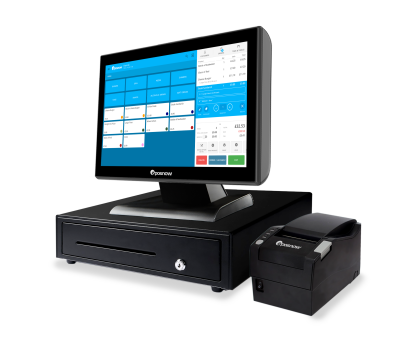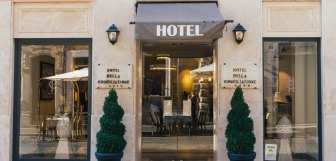Hotel pricing strategy: Maximising revenue for lodging success
In the multifaceted world of the Australian hospitality sector, where the bright city lights of Sydney meets the serene beauty of the Outback's starlit skies, hoteliers are finding themselves at a pivotal crossroad. The right path leads to flourishing business and glowing reviews, while missteps in strategy can mean vacant rooms and silent lobbies. One key to success, often as elusive as the perfect sunset over Uluru, lies in the art and science of hotel pricing strategy.
Hotel owners and managers across Australia, whether operating boutique inns in the Barossa Valley or overseeing high-rise accommodations in bustling Melbourne, face a common challenge: setting prices that not only attract guests but also ensure the longevity and profitability of their business. It's a high-stakes game of numbers and nuance, where understanding the interplay between market dynamics and customer perceptions can make all the difference.
In this comprehensive guide, we'll unravel the complexities of hotel pricing strategies that resonate with the Australian market. We'll explore the current landscape of the hospitality industry, decoding trends, and discussing how pricing fits into the broader business strategy canvas. From the basics of cost-based pricing to the intricate dance of value perception, we delve into the methods that can help your hotel not just survive, but thrive in today's competitive environment.
But it's not just about theory; we'll also arm you with practical insights and actionable advice tailored to the unique fabric of Australian tourism. Whether you're a seasoned hotelier or just dipping your toe into the industry's waters, this guide aims to be your compass, steering you towards more informed decisions that balance the scales of demand, value, and profitability.
Understanding the hotel industry
When it comes to setting the stage for a pricing masterpiece, it’s essential to paint the first stroke with a solid understanding of the Australian hotel market demand. Like the diverse ecosystems of the Great Barrier Reef, the hospitality sector in Australia is multifaceted and rich in variation, catering to both intrepid backpackers and luxury seekers. So let's dive in and navigate these waters together.
Current trends in the hospitality industry
If you're at the helm of a hotel business in Australia, you've likely felt the ebb and flow of industry trends as they roll in like the tides of the Pacific. The landscape is ever-changing, but some currents have stronger pulls than others.
Domestic travel has surged to the forefront, with Aussies becoming tourists in their own backyard, seeking out both the hidden gems and the celebrated icons from the bustling lanes of Melbourne to the windswept coasts of Tasmania.
But it's not just about location; it's the experience that counts. There’s a buzz around boutique accommodations, eco-lodges, and tech-smart hotels that cater to Instagram-worthy moments as much as a good night's sleep. International eyes are turning back towards Australia too, with borders open and flights filling up.
The successful hotelier will be the one who can ride these waves, adapting their pricing to the tide of these emerging trends, ensuring they capture every opportunity that the great Australian hospitality sector presents.
The role of pricing in your hotel business strategy
Pricing, in the realm of hotel management, is less about slapping a tag on a room and more about storytelling—where the price is part of the narrative that captivates your audience.
In the vibrant theatre of Australian hospitality, pricing isn’t just a figure; it's a statement of value, an invitation to experience what you offer. It’s about understanding the psychology of your guests, the perceived value of your hotel rooms, and the amenities that turn a stay into an experience.
Are you positioning yourself as the go-to for urban business travellers, the oasis for weekend escapists, or the budget-friendly stopover? Each identity comes with its own pricing strategy, intricately tied to the overall business strategy and hotel brand image. This price point then influences how potential guests perceive your hotel, often being the first real interaction they have with your brand.
Get it right, and you've opened the door to not just occupancy, but loyalty and word-of-mouth marketing that no billboard can buy.
Regional considerations within the Australian hotel industry
Navigating the Australian hotel market is a bit like setting out on a bushwalk — it pays to know the terrain. Your hotel's location whispers secrets about how to price your rooms.
Are you nestled in the hustle of Sydney's CBD, where business travellers might pay a premium for convenience? Or are you perched by the wave-lapped shores of Byron Bay, where surfers and sun-seekers dictate a different pricing rhythm, perhaps more in tune with the seasons? It’s about reading the room—or in this case, the region—and tailoring your pricing strategy to the local tempo, ensuring it harmonizes beautifully with the expectations and wallets of your desired clientele.
Hotel pricing strategy examples
Alright, let's tuck into the meat pie of our discussion: hotel pricing strategies. Just like there's no one-size-fits-all approach to throwing a shrimp on the barbie, there isn't a single pricing strategy that works for every hotel in Australia. So, pull up a chair and let's chew over some of the fundamental pricing tactics that could put your establishment on the map.
1. Cost-based pricing strategy
Think of cost-focused pricing as your hotel's Akubra hat: practical, no-fuss, and quintessentially essential. This approach is the trusty swagman of strategies, starting with the basics. You tally up the costs of running your establishment—the behind-the-scenes ballet from housekeeping to the high-speed Wi-Fi that keeps guests connected.
Then, you factor in a profit that feels just right. It's not about charging what the market can bear but ensuring you're not short-changing your business. While this method is straightforward, remember, your guests are paying for an experience, not just a bed for the night.
2. Competition-based pricing strategy
Competition-based pricing is like having a yarn with fellow hoteliers without saying a word. It's all about having your ear to the ground and your eyes on the prize—your rivals. This strategy is akin to knowing the moves in a friendly cricket match; you've got to watch what the others are bowling to play your best bat. Peek at the pricing patterns of the hotel down the road—are they offering a weekend getaway deal during the footy finals? You might think about stepping up your game with a similar offer.
It’s a dynamic dance; if you price too low, you might fill your rooms but at the cost of your margins. Swing too high, and the echo in your corridors could be louder than the cheers at the MCG.
The key is to strike that perfect balance—compelling to guests and profitable for you. After all, you want to be part of the competition, not just a spectator.
3. Value-based pricing
Value-based pricing is the gourmet dish of the pricing world, where the ingredients are as much about the quality of the service as the thread counts in the sheets. This approach asks you to slip into the shoes of your guests and take a stroll around your own hotel. What's the vibe? Is it a sumptuous sanctuary of tranquillity or a sleek portal to urban adventures? It's not just a room with a view—it's the aroma of fresh barista-brewed coffee in the morning, the plushness of the robes, the warmth of the welcome at reception.
Each feature elevates the perceived value. Your task is to capture that essence and translate it into a price that guests are happy to pay. In the end, if your guests feel the price reflects the experience—from the serenity of your spa to your dazzling dining—they'll not only walk away satisfied, but they'll walk straight into the narrative of your marketing, telling tales of their stay to friends and family, and that is priceless.
Advanced hotel room pricing strategies
Alright, you've got the basics down pat and now you're ready to dive into the deep end with some advanced and effective pricing strategies. Think of these as your secret sauce, that special something that elevates a good dish to greatness. These aren't just tricks of the trade; they are the tools that transform your strategy into an art form.
1. Yield management within your hotel room pricing strategy
Let's dive into yield management, the veritable chess game of hotel room pricing models. Picture yourself as the grandmaster, each move calculated to ensure maximum revenue per available room (RevPAR). In essence, yield management is about selling the same room to the right customer at the right time for the right price. Sounds like a riddle? It's actually a fine-tuned balance act guided by real-time data.
Imagine your hotel is a beehive of activity, with various guests buzzing in and out: the queen bees (high-paying customers), the worker bees (regular guests), and the drones (discount-seekers).
Yield management is about knowing when to welcome each type of guest to optimize your hive's productivity. During peak season, when the demand is as high as the Sydney Harbour Bridge, you might focus your hotel room rates on attracting more queen bees. But in the quieter months, those worker bees become your bread and butter, and you might lower room rates slightly to maintain a steady flow.
Using advanced booking algorithms and historical occupancy data, you can predict demand surges and downturns. This approach isn't just about reacting to the market—it's about anticipating it. By mastering yield management, you can ensure that every room, like every move on the chessboard, is played to yield maximum advantage.
2. Price discrimination to increase hotel revenue
Delving deeper into price discrimination, it’s not about building walls between guests, but rather, creating lanes that cater to their unique travel needs and budget. It’s a symphony of targeted offers and specials that resonate with different demographics. Like a skilled barista adjusting the foam for a flat white or a cappuccino, you're fine-tuning your offers.
For the business traveller, the allure might be in a seamless stay where WiFi and a quiet corner to work are part of the package.
For families, it could be complimentary breakfasts and tickets to a local attraction. Understanding the nuances of your clientele allows you to tailor your pricing not just to their wallets, but to their reasons for traveling.
It's about intelligent segmentation: perhaps offering premium rooms with exclusive views at a higher rate, while the more economical rooms still provide the same exceptional service but with a budget-friendly tag. By implementing this dynamic pricing strategy effectively, every type of guest finds value, and your hotel finds a diverse and steady stream of clientele year-round.
3. Psychological pricing strategy for your hotel rooms
Psychological pricing is the magician's rabbiting your pricing strategy hat, where perception often trumps reality. It’s not mere penny-pinching; it's a dance with the customer's subconscious. For instance, setting a room rate at $199 instead of a round $200 can, surprisingly, make a guest feel like they’ve clinched a deal, even though the difference is but a single dollar.
This method goes beyond the classic .99¢ strategy. It’s about bundling services and amenities in a way that guests perceive as added value. Consider the appeal of a “$250 relaxation package” that includes a spa service, high tea, and late checkout, against the individual pricing of these services. This creates a perception of exclusivity and savings.
In your hotel, this might translate to creatively packaging experiences and amenities that make a guest feel savvy and special. It’s the psychological edge that can turn a potential customer into a satisfied guest, tapping into the emotive side of spending that often guides decision-making.
Leveraging technology in hotel pricing strategies
In the era where technology reigns supreme, leveraging digital tools in your hotel pricing strategy is like having a Swiss army knife in your pocket. It’s the edge you need in the cutthroat world of hospitality. Let’s take a virtual tour of how technology can not only simplify your life but also sharpen your hotel’s pricing edge.
Point of sale (POS) systems
POS systems are the unsung heroes in the hospitality narrative, seamlessly managing transactions across your hotel’s diverse services. But their role isn’t confined to processing payments; they're crucial cogs in the pricing machine. By integrating your hotel POS system with your pricing strategy, you can unlock powerful data on guest spending patterns such as length of stay, popular services, and peak usage times.
Imagine knowing that your spa services see a surge in demand during the late afternoon or that your poolside bar’s happy hour could be tweaked to start an hour earlier to maximize sales. This data is gold dust for refining pricing strategies not just for rooms but for all ancillary services your hotel offers. It allows you to adjust prices dynamically, creating bundled offers or special promotions that align with guests' consumption trends.
By incorporating POS data, you can ensure that every aspect of your hotel - from the penthouse suite to the espresso shot - is priced in harmony with guest behaviour and expectations, further driving revenue and enhancing the guest experience.
Revenue management systems (RMS)
Enter the realm of Revenue Management Systems (RMS) – your oracle for deciphering the complex patterns of consumer behaviour and market trends. These sophisticated platforms churn through mountains of data, analyzing past and current market information to forecast demand and recommend optimal pricing. Think of RMS as your digital sommelier, expertly selecting the pricing strategies that pair best with market conditions to maximize your revenue.
They continuously track booking patterns, and cancellation rates, and even scour the web for your competitors' pricing, ensuring you’re never out of step with the market's tempo. It's about having a bird’s-eye view of your operations and a granular look at every fluctuation in the market, with the RMS as your guide to navigating these winds.
Customer relationship management (CRM) tools
Finally, let’s not forget the power of Customer Relationship Management (CRM) tools. These systems are like the friendly barista who remembers your regulars’ names and their favourite orders. CRMs manage your interactions with past, current, and potential guests, storing valuable data that can be used to personalise their experiences and tailor your pricing offers.
Through detailed guest profiles, you can offer personalized deals that resonate with individual preferences, leading to increased loyalty and repeat business. It’s the difference between a generic "G'day" and a warm, "Welcome back, we’ve got your favourite room ready for you."
Incorporating these technological tools into your pricing strategy isn't just about keeping up with the times—it's about staying ahead of the curve. They empower you to make data-driven decisions, personalise your guest experience, and ultimately, keep your hotel humming with satisfied guests and a healthy bottom line.

Gain all the advantages of a POS system with detailed, flexible, downloadable reports, and so much more:
- Manage and update products quickly with easy-to-use software
- Expand your business into multiple channels and integrate with a variety of online platforms
- Manage multiple locations and salespoints with multi-site management
- Keep queues short with streamlined, modifiable sales processes
- Choose a setup that suits you with software and hardware options
Regulatory considerations and ethical practices in hotel pricing
As you navigate the complex world of hotel pricing in Australia, it's crucial to steer the course with a compass of regulatory considerations and ethical practices. Staying within the boundaries of the law and fair play isn't just good karma; it's good business.
Compliance with Australian consumer law
First and foremost, your pricing strategy must comply with Australian Consumer Law (ACL). This means being transparent with your pricing, avoiding any form of deceptive marketing, and ensuring that the price advertised is the price your guests will pay.
The ACL is designed to protect consumers from unfair trading and price exploitation, so make sure that your special offers, discounts, and package deals are as clear as the waters of the Great Barrier Reef, with no hidden reefs (or fees) to cause unwelcome surprises.
Ethical hotel pricing strategies
On the ethical frontier, it’s vital to implement pricing strategies that maintain integrity and fairness. This includes not inflating prices during times of crisis or scarcity to take advantage of customers, a practice known as price gouging. It’s also important to consider the impact of your pricing decisions on the local community and economy.
Engage in fair competition, and avoid any form of price-fixing with competitors. Ethical pricing is not just about obeying the law but upholding the trust and confidence that your guests place in your establishment. By adhering to ethical practices, you foster loyalty and a strong, positive reputation in the marketplace.
In conclusion, crafting a hotel pricing strategy that resonates with your clientele and leverages the latest technology, while navigating the regulatory landscape with integrity, can elevate your business to new heights.
Remember, the goal is to balance profitability with customer satisfaction, building a reputation that endures. Embrace these strategies, and watch your hotel not only survive but thrive in Australia’s vibrant hospitality scene.




